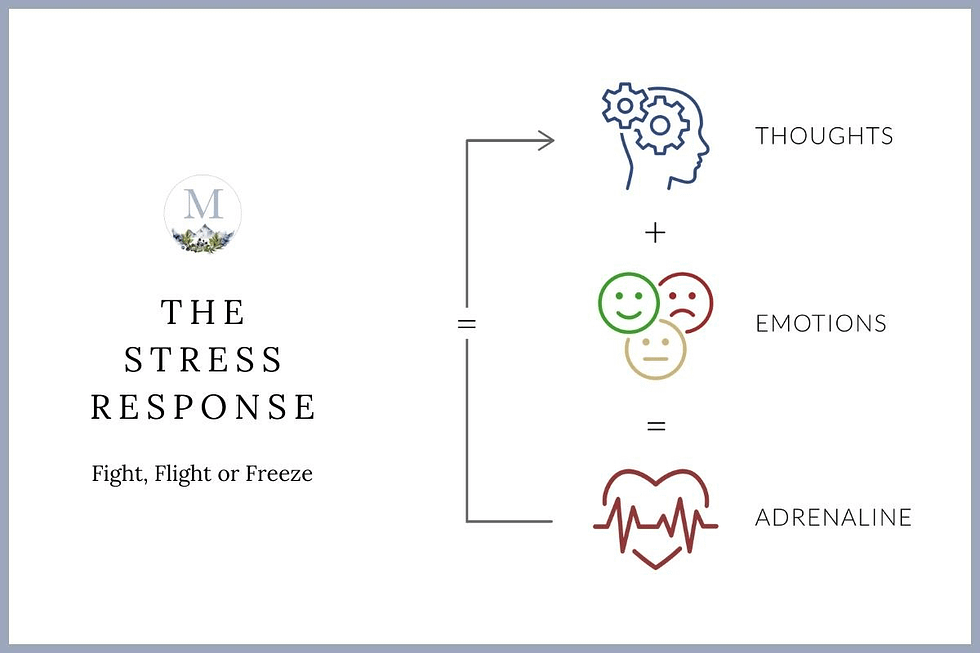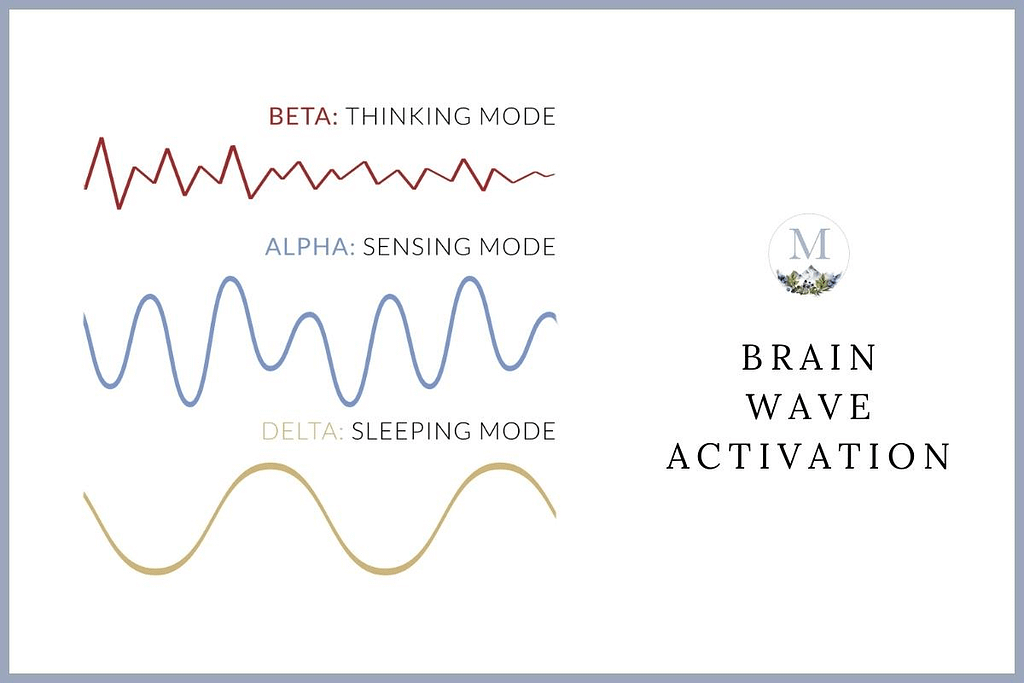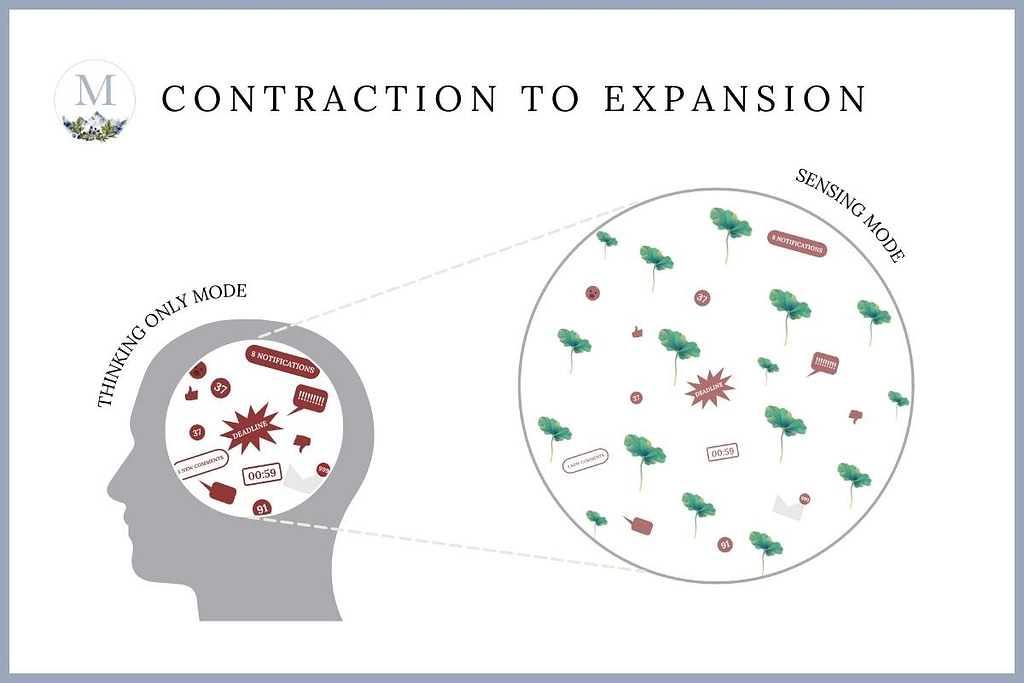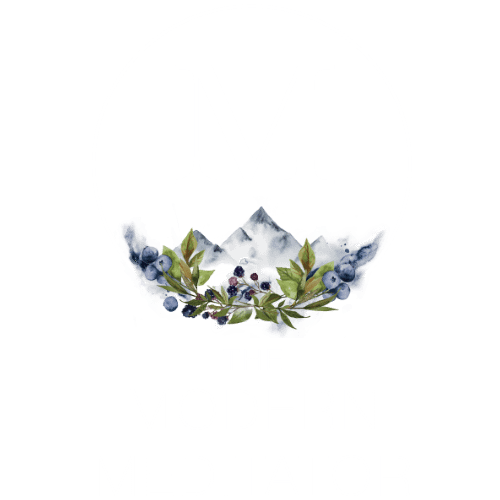Shock Absorption for the Soul
When coming to meditation for the first time, we’re often captivated by the end goals of feeling calm or less depressed, being able to fall asleep (and get back to sleep), or to support healing of a medical diagnosis like cancer. We’re taught what to do by way of a technique or two – and for many people that’s enough. The experiential changes in the body are measured by the felt sense that “it’s working” or “it’s helping”.
For those who need a little more convincing, understanding how meditation works to relax the body and calm the mind can be helpful.
The Stress Response
Firstly, let’s look at the stress response. This is the process by which thoughts + emotions together produce adrenaline (and other stress hormones like cortisol) in the body, and lead to more thoughts, more emotions, and more adrenaline. It sends us into “fight, flight or freeze”, where our autonomic or sympathetic nervous system is activated – our heart pounds, our pupils dilate, our body clenches, and we’re on high alert.
Without a way to bring that response back into balance, the cycle is perpetuated and can lead to chronic stress, which is toxic on our body.

When we talk about emotions and the stress response, the two obvious families that produce a spike in adrenaline are fear (including anxiety, jealousy/envy, confusion and panic) and anger (including guilt/shame and hatred). However, the stress response isn’t only activated by “bad” or challenging events. Emotions from the happiness family – such as excitement – can also send our mind and system into overdrive, producing harmful hormones. (Know any healthy adrenaline junkies?)
Examples of when the stress response might be activated:
- Speaking on stage (fear and shame)
- Being cut off by a reckless driver (fear and anger)
- Lining up for the rollercoaster at a theme park (excitement)
- Having a mountain of tasks to complete with competing deadlines (anxiety)
- Waiting at the end of the aisle on your wedding day (excitement and exhilaration)
- Having insomnia (worry and frustration)
The Relaxation Response
The late Dr Herbert Benson first coined the phrase “the relaxation response” as a counter to the stress response. As a cardiologist and founder of Harvard’s Mind/Body Medical Institute, he essentially re-branded meditation into a practice digestible by mainstream culture. The method he taught to activate the parasympathetic nervous system – the “rest and digest” state – involved breathing and the repetition of words/phrases (i.e. meditation.)
RELAXATION RESPONSE EXERCISE
- Bring to mind a number, word, short phrase or prayer (such as “one”, “peace”, “calm” or “shalom”);
- Repeat this word on every out-breath;
- When thoughts arise, say to yourself, “oh well” and continue repeating your word or phrase on the out-breath;
- Practise this for 10-15 minutes – preferably in the morning before breakfast.
Too Much Thought is Toxic
In his book The Five Minute Meditator, author and meditation teacher Eric Harrison explains that when we spend all of our time in goal-oriented thinking mode, we activate beta brain waves. These are the spiky, erratic, hard working brain waves produced when we’re solving a problem, planning for future events, or rehashing yesterday’s argument.
What meditation does is move us into alpha brain waves.
Alpha brain waves are akin to sitting in your car in neutral. You’re awake, you’re alert, but also relaxed – you’re idling rather than revving. These brain waves are softer, smoother, slower and more rhythmic.
Theta brain waves are stimulated when we get deeper into meditation, usually as we become more experienced – they slow down even further (accompanied by a wakeful yet dreamlike state.)
By contrast, when we’re deep in sleep, delta brain waves are active – these are the largest, slowest and most rhythmic of them all.

Thinking Mode Versus Sensing Mode
Of course, breathing and repeating words is just one meditation technique or method of invoking the relaxation response.
Another way to consider meditation is entering into “sensing mode”.
Sensing mode is where we gently guide our attention to our sensory experience; where we experience the present moment through our senses.
In sensing mode, we rest with the awareness of sound (hearing), sensations in the body (touch), flavours in the mouth (taste), colours, shapes and textures (sight) and fragrance/odours (smell).
When we spend time in sensing mode – even intermittently – no longer are our thoughts the dominant experience. They’re there – but they retreat to the background, and we trade feeling tight and constricted with open and expansive. Anyone who’s taken a walk in nature or along the shoreline of a beach will recognise that pleasant, refreshed feeling. They’ve had multiple senses to indulge.
The great thing about meditation is that we don’t need to live near a beach or forest to drop into sensing mode. Our senses are with us every moment of every day. The experience of the present moment is with us every moment of every day.
We can:
- Pause for a few moments and listen for all the sounds coming up around us.
- Glance around the room and seek out colours, shapes, or light and shade.
- Single-task while eating our breakfast, tasting the full flavour of muesli and berries
- Move our attention through different body parts, feeling the sensations that are there
- Breathe in and see if any fragrances or odours are present
Breathing itself is a sensory experience. It’s the sense of touch that allows us to discern the temperature of the air as it enters our nostrils, the movement of the chest rising and falling and the swoosh of air as it touches the back of our throat and fills up our lungs.
A Word On Thoughts and Meditation
While incessant thought might be toxic on our body when we’re not giving our brain a break, we need to caution against making thoughts the enemy.
Yes, sensing mode brings down the heightened state of arousal, but you’ll notice that thoughts are still there. They just become a whisper instead of a drill sergeant.

It’s best to relate to meditation and a sensing practice as widening the circle of our awareness to create a kind of shock absorption system.
With more space to play in, thoughts are free to move about and move on, while the lower emotional charge of sensing evens out the “playing field” so to speak, creating breathing room, a balm, or a cushioning for our nervous system.
Once our body has relaxed and brain is refreshed, we can step back into thinking more with more clarity, energy and focus.
Recommended Meditation: Sensing Calm
To learn more about sensing mode and other ways to work with the stress response, visit my 6-week beginner’s program Learn to Meditate and be supported on your meditation journey.





